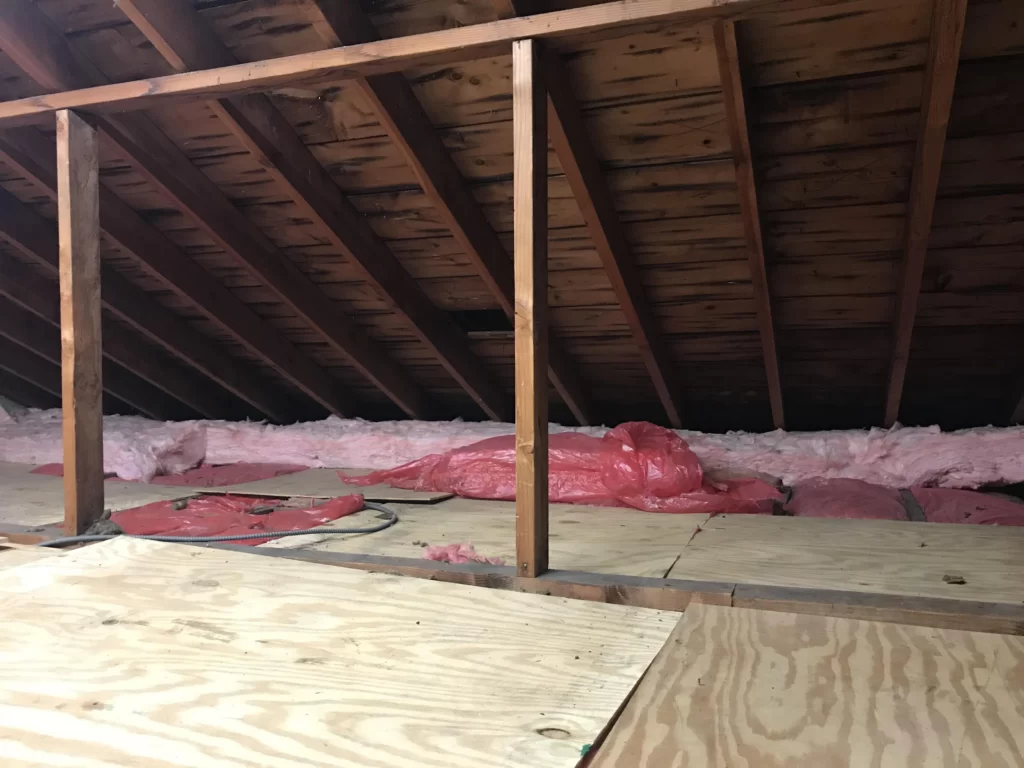
Having a comfortable space is the dream of every homeowner. However, when refinishing the basement, some may forget the significant aspects like waterproofing, insulation or mold treatment which can cause potential discomfort in the near future. While renovating your basement to add space, basement insulation is also an important component in improving a home’s energy efficiency and comfort. By insulating basement walls, you establish a thermal barrier that aids in temperature regulation, minimizing heat loss in the winter and heat gain in the summer.
In this article, we’ll highlight the importance of insulation, its several types, benefits and process of installation in detail to help your in your upcoming remodeling venture. So let’s have a look.
Preparing to insulate
- Assess and address moisture issues: To produce a dry environment suited for insulation, identify and repair any existing moisture problems, leaks, or water issues in the basement.
- Seal and clean: Clear trash and old insulation from the walls, then seal gaps and cracks to produce a clean, airtight surface for insulation.
- Insulation Selection and Cutting: Choose the proper insulation material (for example, fiberglass batts or foam boards) and cut it precisely to meet the measured dimensions of the walls.
- Install insulation: Place the insulation tightly against the walls to ensure complete coverage. Consider installing a vapor barrier for further protection, particularly in colder climates.
- Follow safety guidelines: Wear protective equipment and follow manufacturer recommendations when handling insulating materials. Consider hiring a professional for major tasks or if you’re unsure about certain components of the installation.
What is an R or RSI value?
The RSI and R-value of insulating materials assess their thermal resistance, demonstrating their ability to resist heat flow. The R-value for basement insulation is used in the United States and is measured in Fahrenheit square feet per British thermal unit (°Fft2/BTU), whereas the RSI value is its metric counterpart. Higher numbers indicate better insulation. These measures influence insulation choosing decisions by taking into account elements such as climate and energy efficiency. Both variables are critical in analyzing and enhancing the thermal performance of a building.
Insulating from the inside
It is possible to make great strides in improving the energy efficiency and comfort of your house by insulating the basement from inside. It is an efficient method that, in addition to making your basement and the rest of your house more comfortable, may also help you save money on your energy costs.
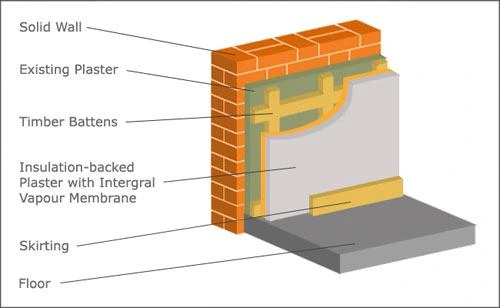
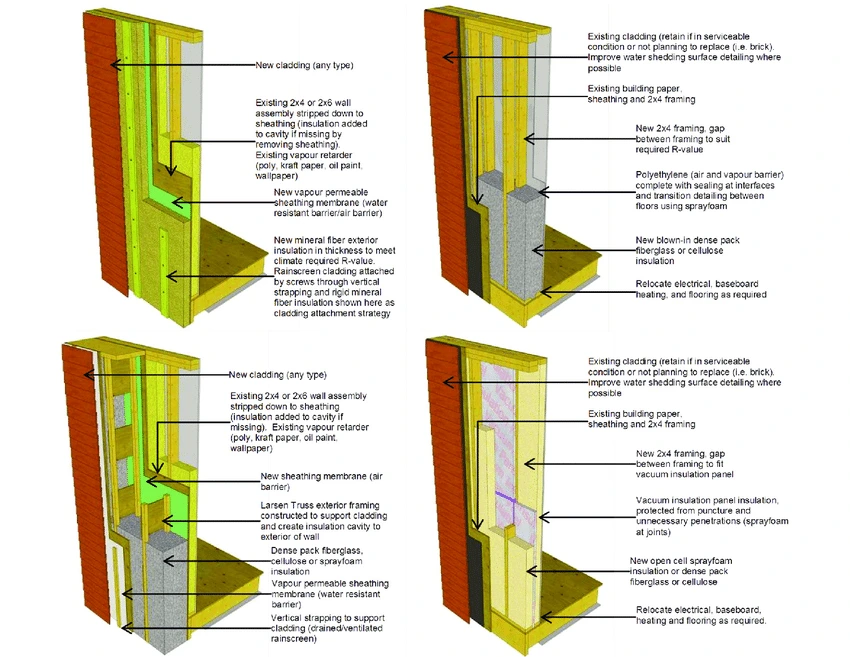
Insulating from the outside
It is strongly suggested that you install insulation on the outside of your property since doing so offers the best possible protection against moisture. Because the dirt that is around the basement has to be excavated first, installing insulation outside is a more time-consuming and costly endeavor.
Why is basement insulation important?
Basement insulation is critical for energy efficiency, keeping temperatures comfortable, and lowering heating and cooling costs. It functions as a moisture barrier, limiting mold formation and ensuring a healthy environment. This investment not only raises the value of the property but also protects it from potential damage. Soundproofing benefits from basement insulation, resulting in a peaceful living space. Overall, it improves your home’s functionality, comfort, and long-term sustainability.
Benefits of an insulated basement
You may be able to reduce the amount of money you spend on heating your basement if you properly insulate it, while still maintaining a very comfortable living environment. Having an insulated basement floor provides a number of advantages, including the following:
- Increased Energy Efficiency: Insulating a basement helps to establish a thermal barrier, which reduces heat loss during the winter and prevents heat gain during the summer.
- Control of Moisture: Insulation, when paired with appropriate techniques for controlling moisture, may assist reduce moisture-related concerns like as condensation in basement, mold development, and water intrusion. Because of this, the air in the basement will be drier and hence healthier.
- Better Humidity Control: Basements that are adequately insulated may help to maintain more consistent levels of humidity within the home, which results in a living environment that is more pleasant.
Types of basement insulation
There are various types of basement insulation. Let’s have a look at the most common ones :
- Fiberglass Batts: These are often used in basements since they are simple to install and provide enough insulation. It is possible to position them either between the studs or against the concrete walls.
- Spray Foam Insulation: Spray foam insulation for basement has superior insulating and air-sealing properties. It may run you more money, but it will keep your basement warm and dry far better than any other option.
- Rigid foam insulation: provides excellent insulation and is resistant to moisture buildup. It is possible to install it either on the inside or the outside of the insulation basement walls.
- Insulation made of mineral wool, which is resistant to the effects of moisture and may be used in a variety of contexts. It is available in a variety of forms, such as batts and stiff boards, among others.
Advantages of inside insulation:
- Insulation placed on the inside of a building is often more cost-effective than insulation placed on the outside of the building. Because it takes less supplies and fewer hours of work, it is an option that many homeowners find to be more affordable.
- You are able to preserve the original design and aesthetics of your home. Interior insulation does not change the way the building appears from the outside, so you are able to keep your home’s original design and aesthetics.
- Optimal for Use in Retrofit Projects: When it is not possible to add insulation to the outside of a building as part of a retrofit project, inside insulation is often selected as the best alternative. It is an option that works well with pre-existing structures.
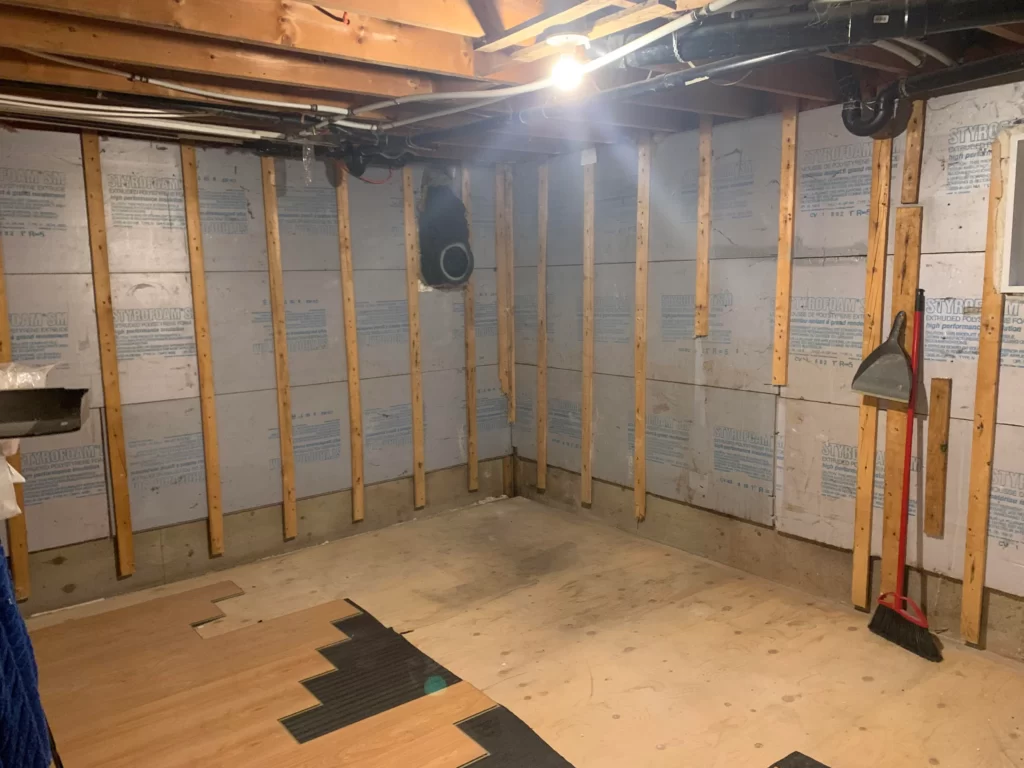
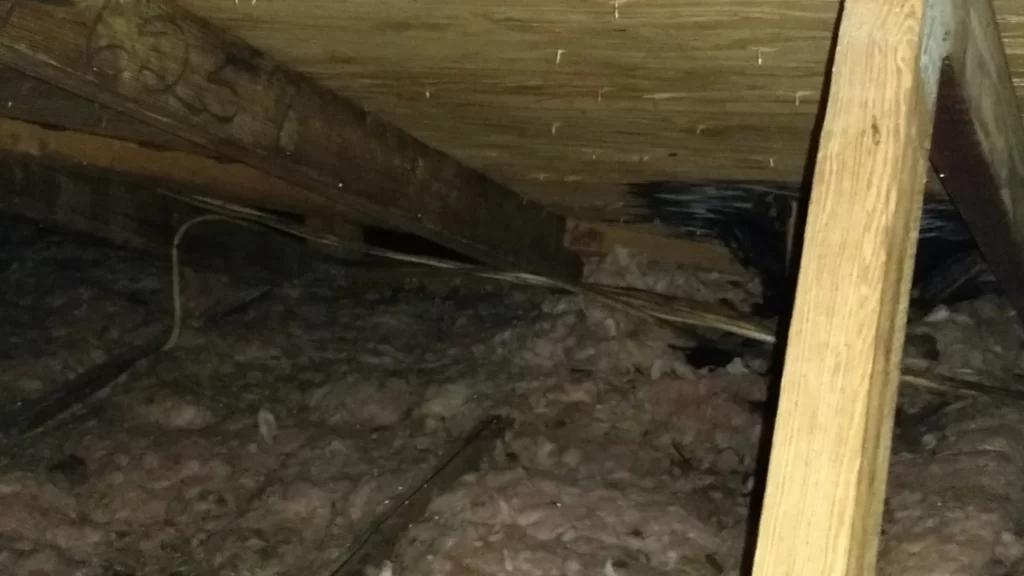
Disadvantages of inside insulation:
- There may be a reduction in the amount of useable living space in your basement if the insulation is installed from the inside. If you start out with a constrained amount of space, this may be a problem for you.
- Difficulties in Achieving good Vapor Barriers: Achieving good vapor barriers may be difficult, and improper installation can lead to moisture issues inside the walls.
- Insulating from the inside makes the outer walls less accessible, which makes it more difficult to do maintenance and repairs on those walls. This may be a drawback in the event that there are problems with the outside.
Advantages of outside insulation:
- Save on Heating bills: Proper insulation helps retain heat, decreasing the need for excessive heating during colder months and resulting in cost savings on energy costs.
- Increase property value: Well-insulated homes are frequently more appealing to buyers, adding to an increase in overall property value.
- Enhance Thermal Capabilities: Insulation regulates temperatures, creating a more comfortable living environment by keeping interiors warmer in the winter and cooler in the summer.
- Improved Sound Insulation: External insulation adds to improved sound insulation, generating a quieter indoor environment and improving internal acoustics.
- Condensation and Damp Prevention: Insulation acts as a barrier against condensation and damp issues, promoting a better living environment and preventing structural damage.
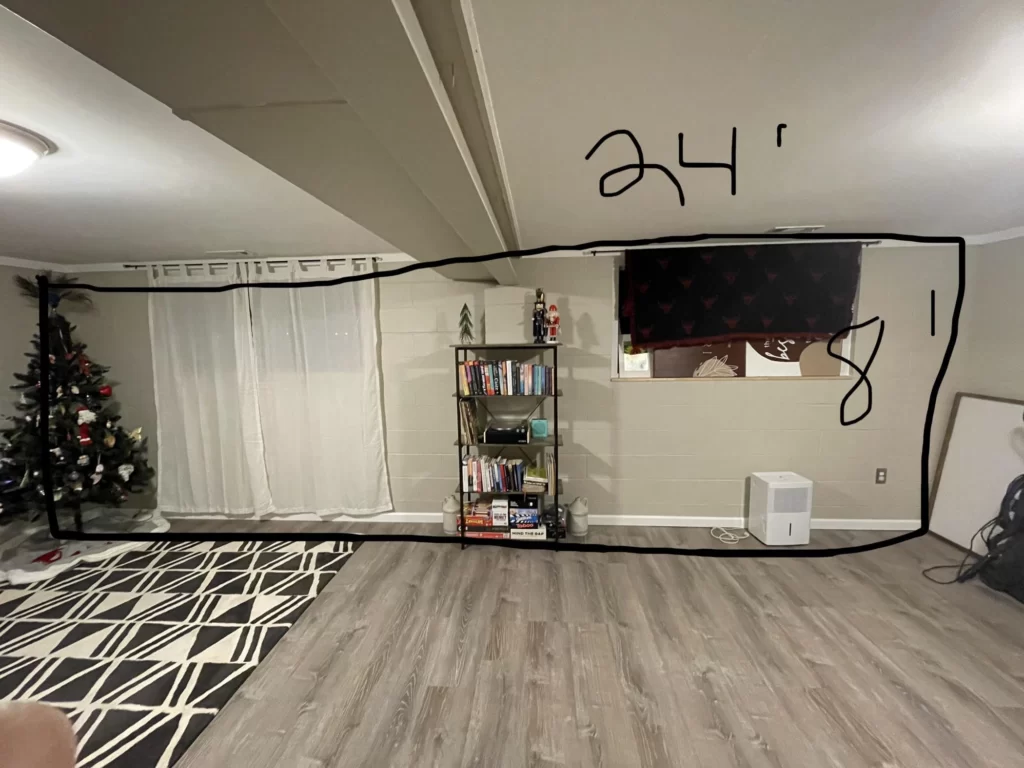
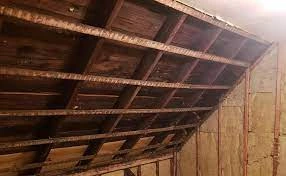
Disadvantages of outside insulation:
- Installing insulation on the outside of a building is often more costly than installing insulation on the inside of the same building.
- Aesthetics and the overall appearance of the building may be affected by the installation of outside insulation, which can change the way the building’s facade looks.
- Management of Moisture: An efficient moisture management plan is an absolute need for outside insulation.
How to insulate your basement?
- Choose your Insulation:
Consider moisture resistance and thermal efficiency while choosing an insulation type for your basement.
- Ensure Basement Dryness:
To avoid potential damage and ensure insulation effectiveness, address any existing moisture concerns in the basement before insulating.
- Avoid Polyethylene Vapor Barriers:
Polyethylene vapor barriers should be avoided in basements because they can retain moisture and contribute to mold growth.
- Caulk your foundation walls:
Caulk gaps and cracks in foundation walls to reduce air leakage and provide a more energy-efficient and airtight environment.
- Glue Foam Insulation to foundation walls:
To build a continuous and effective thermal barrier, adhere foam insulation directly to foundation walls with a suitable adhesive.
- Install Blocking:
Install blocking between studs to provide additional support and a strong framework for insulation installation.
- Install Studs:
Install framing studs securely against foundation walls, creating a framework for insulation placement and finishing basement walls.
- Cover the insulation:
Cover the insulation with a suitable material to protect it and give the finished basement appearance.
- Install Fiberglass Batts:
Install fiberglass batts between the studs to improve insulation and help with energy efficiency and temperature management in the basement.
Basement floor insulation
Insulating your basement floor is an excellent way to improve energy efficiency and comfort. Begin by fixing any existing moisture problems and choosing an appropriate insulating material, such as rigid foam boards or spray foam. Clean and repair any defects in the subfloor, then install a vapor barrier to prevent moisture intrusion. Lay the insulation material out evenly, closing any gaps to create a continuous heat barrier.
How to insulate basement floor?
- Analyze Moisture Issues: To ensure long-term effectiveness, address any existing moisture issues in the basement before installing insulation.
- Select Insulation Material: Choose the best insulation material for the job, such as rigid foam boards, spray foam, or foam insulation panels.
- Install Vapor Barrier: Install a vapor barrier over the flooring to keep moisture out of the insulating material.
- Material for Laying Insulation: For optimal thermal insulation, spread the chosen insulation material evenly across the subfloor.
- Finish the Floor: To create a comfortable living environment, conclude the procedure by adding a subfloor material and finishing with your choice flooring.
Invest in professional basement insulation
Insulation is a very crucial process to finish your basement in Canada. It is one stop solution to provide comfortable living space with reduced noise, optimum temperature and unlimited moisture control. However, basement insulation is a challenging task so one can’t do it without any expertise in it. Therefore, ensure your basement is well-protected with professional basement insulation, providing optimal r-value for energy efficiency and comfort.
How to Insulate Outside of The Basement
Down below is the step-by-step process of insulating the exterior walls, including trench digging , inspecting the foundation, and proper preparation of surface.
Digging the Trench
Before insulation, start by digging the trench around the foundation to create space for exterior wall insulation and drainage systems if necessary.
Inspecting the Foundation
Thoroughly examine the foundation for any issues before proceeding with insulation; this step ensures a solid base for effective basement exterior wall insulation.
Prepare the Surface
Properly prepare the surface by cleaning and addressing any defects, ensuring a smooth application for the chosen insulation method.
Install the Drainage System (if necessary)
For enhanced protection, consider installing a drainage system, a crucial component when implementing basement floor insulation methods.
Measure and Cut Installation
Accuracy is key when insulating; measure and cut insulation materials precisely to achieve the desired fit and performance.
Apply the Flashing
Seal gaps and prevent moisture infiltration by correctly applying flashing around windows and doors in the basement insulation project.
Refill the Excavation
After completing the insulation, carefully refill the excavation around the foundation, restoring the landscape to its original state.
Basement Insulation from The Inside
Explore the benefits of insulating your basement from the inside, considering factors like basement insulation cost and various insulation options available. You can also get a free quote by clicking on Basement Insultion Calculator to get a more clear idea of required budget.
Conclusion
We hope this article helps you in understanding the significance of basement insualtion for a desirable cozy and comforting space. If you are also a homeowner looking for best insulation for your basement in Canada, we are here to facilitate you with our comprehensive renovation and insulation services. Contact us today and get the best insulation for your basement now.


